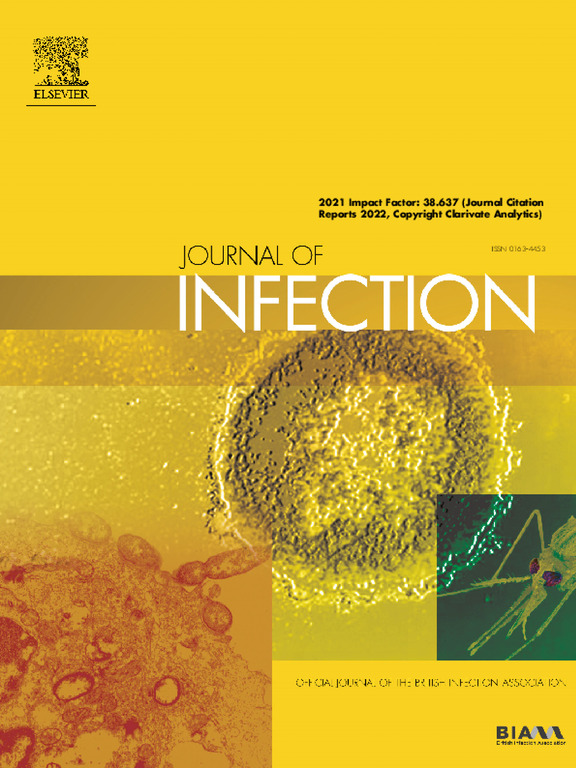Investigation of the viral causes of febrile jaundice in Burkina Faso through metagenomic sequencing
IF 11.9
1区 医学
Q1 INFECTIOUS DISEASES
引用次数: 0
Abstract
Objectives
Yellow fever virus (YFV) is a key concern in West Africa, often associated with febrile jaundice. However, many patients with this syndrome test negative for YFV, raising questions about other potential viral etiologies. This study aimed to characterize the viral landscape in YFV-negative febrile jaundice cases using metagenomic next-generation sequencing (mNGS).
Methods
Serum samples were collected in 2019 from 152 febrile jaundice patients in Burkina Faso who tested negative for both YFV and malaria. A random subset of 100 samples was analyzed by mNGS to identify viral sequences. Bioinformatic pipelines were applied to classify viral reads, and findings were validated by quantitative PCR (qPCR) and serological assays. Additional specimens from the same cohort, as well as from febrile patients without jaundice, were tested to assess the prevalence of the key viral findings.
Results
mNGS revealed 58 viral species, including four human pathogens: HIV-1 (n=1), YFV (n=1), hepatitis A virus (HAV, n=16), and hepatitis B virus (HBV, n=18). qPCR confirmed 75% of HAV and 67% of HBV cases. Serological testing on additional samples confirmed comparable HAV and HBV prevalence among jaundiced patients, but significantly lower rates among those without jaundice.
Conclusion
mNGS uncovered undiagnosed viral infections, demonstrating its value for differential diagnosis and surveillance in resource-limited settings.
通过宏基因组测序对布基纳法索发热性黄疸病毒病因的调查。
目的:黄热病病毒(YFV)是西非的一个主要问题,通常与发热性黄疸有关。然而,许多患有该综合征的患者YFV检测呈阴性,这引发了对其他潜在病毒病因的质疑。本研究旨在利用元基因组新一代测序(mNGS)表征yfv阴性发热性黄疸病例的病毒格局。方法:2019年对布基纳法索152例黄热病和疟疾均呈阴性的发热性黄疸患者采集血清样本。mNGS分析了100个样本的随机子集,以确定病毒序列。应用生物信息学管道对病毒序列进行分类,并通过定量PCR (qPCR)和血清学分析对结果进行验证。对来自同一队列的其他标本以及来自无黄疸的发热患者的标本进行检测,以评估主要病毒发现的流行程度。结果:mNGS共检出58种病毒,包括4种人类病原体:HIV-1 (n=1)、YFV (n=1)、甲型肝炎病毒(n= 16)和乙型肝炎病毒(n= 18)。qPCR证实75%的甲型肝炎和67%的乙型肝炎病例。对其他样本的血清学检测证实,黄疸患者中甲型肝炎和乙型肝炎的患病率相当,但在非黄疸患者中发病率明显较低。结论:mNGS发现了未确诊的病毒感染,显示了其在资源有限的情况下的鉴别诊断和监测价值。
本文章由计算机程序翻译,如有差异,请以英文原文为准。
求助全文
约1分钟内获得全文
求助全文
来源期刊

Journal of Infection
医学-传染病学
CiteScore
45.90
自引率
3.20%
发文量
475
审稿时长
16 days
期刊介绍:
The Journal of Infection publishes original papers on all aspects of infection - clinical, microbiological and epidemiological. The Journal seeks to bring together knowledge from all specialties involved in infection research and clinical practice, and present the best work in the ever-changing field of infection.
Each issue brings you Editorials that describe current or controversial topics of interest, high quality Reviews to keep you in touch with the latest developments in specific fields of interest, an Epidemiology section reporting studies in the hospital and the general community, and a lively correspondence section.
 求助内容:
求助内容: 应助结果提醒方式:
应助结果提醒方式:


